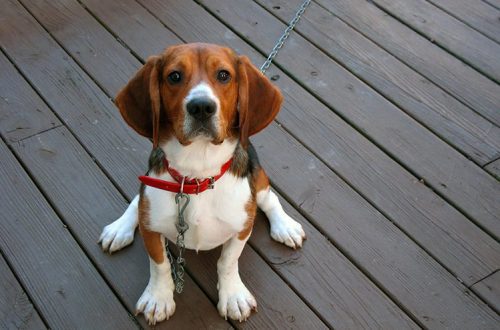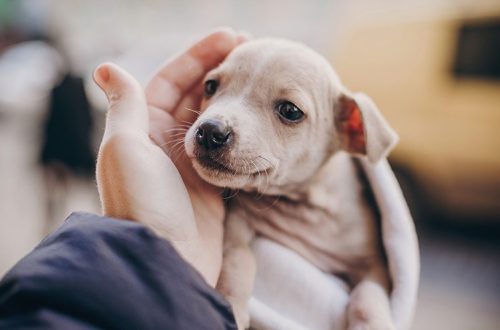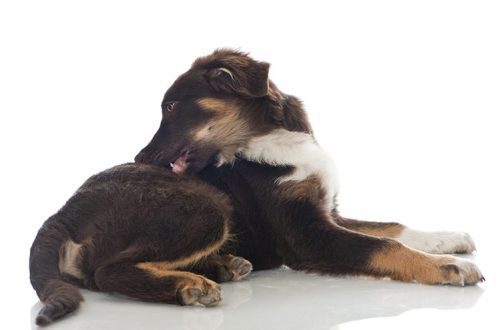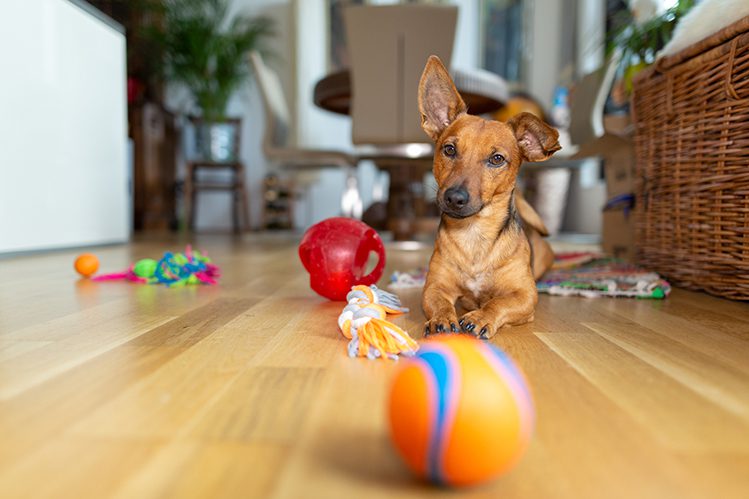
Puppy from 4 to 8 months: what is he and what does he need?
The period from 4 to 8 months of your puppy’s life can be called transitional. During this time, the unintelligent baby will turn into a stately young dog. As it will be? How not to miss the most important and remain a superhost in the most difficult moments? About this in our article.
Conventionally, a dog is considered an “adult” at 1 year old, and large puppies at 2 and even 2,5 years old. Of course, the process of growing up does not end suddenly, with a wave of a magic wand, and each pet has its own path. However, by the age of 8 months, a young dog has already overcome the most rapid stages of growth and development, learns the basic commands and is fully socialized. Let’s talk more about these achievements.
- Change of milk teeth to permanent ones
Puppies keep changing teeth. On average, a complete set of “adult” teeth appears in a dog by 8-9 months. All pets experience teething differently. Some seem not to notice it at all, while others gnaw everything and even refuse to eat because of discomfort in the gums.
How to help?
– Regularly monitor the condition of the oral cavity. See a doctor if your teeth are growing in two rows or your gums are inflamed. Buy a variety of dental toys and treats for your dog: they will reduce discomfort and help cope with stress.
– Take good care of your dog’s teeth. Think about what would be more convenient for you: brushing your pet’s teeth with a special brush and paste, using dental treats and toys, nutritional supplements, or both. Now your pet has adult teeth and keeping them healthy is very important. Regularly check the condition of the oral cavity. Plaque and tartar need to be cleaned off in a timely manner by a veterinarian, otherwise dog dentistry will become a tangible item of your worries and material costs.
Don’t scold your dog if it chews on your shoe. She really is not evil: her gums itch and she is trying to cope with this condition as best she can. Instead of punishing, buy her a new dental toy!
- Mastering basic commands and socialization
By 8 months, with the right approach, the puppy will know all the basic commands and will be able to boast of exemplary behavior anywhere: at home, in transport, on the playground, and even at the veterinarian’s appointment.
What to do?
Repeat basic commands: you can’t, fu, come to me, place, sit, lie down, stand, beside, fetch, etc. Move on to practicing more complex commands: “Voice”, “Crawl”, “Wait”, to commands with gestures, master clicker. Continue to explore the world around you and conquer new heights!

- First molt
The change of downy baby wool in a puppy begins at about 6-7 months. How much a dog will shed depends on its breed and individual characteristics. In some dogs, molting proceeds almost imperceptibly, while others “fall asleep” with hair all around.
If the dog itches a lot, and bald patches, wounds, areas of inflammation appear on the skin, immediately consult a veterinarian.
How to help?
– Regularly monitor the condition of the skin and coat. If you have any worrying symptoms, contact your veterinarian. It is important not to confuse molting with a dermatological disease.
– Choose the right care for your dog: shampoo, conditioner and other skin and coat care products. Now your pet has an adult coat, and its health and beauty should be carefully monitored.
- Sexual maturation
5-6 months is also the beginning of puberty. From day to day, the female may begin the first estrus, and the males begin to identify themselves as adults, become restless and violently sort things out with other dogs on the site.
Don’t worry if your pet hasn’t started estrus at 6 months: it can happen a little later, by a year or even later.
What to do?
– Support your pet, even if it is the third time in a day that he tries to fight with a neighbor’s terrier.
– Enlist the support of a cynologist or zoopsychologist if the dog does not obey you and behaves aggressively.
– Do not rush things. The first heat is not the time for the first mating. The reproductive system and the dog’s body continue to develop. It is better not to plan the first mating until the dog is at least 1,5 years old.
– Avoid crowded areas and postpone visits to the veterinary clinic or grooming salon until the dog is in heat.
– Walk the dog only on a leash, choose quiet places for walks. Be vigilant: during puberty, dogs are prone to escaping!
– If the dog is acting restless, discuss with the veterinarian the use of sedatives.
- First conflicts
At about 7 months old, the dog may begin to clash with his four-legged friends. Only yesterday they were playing ball together, and today they are acting like enemies! Don’t worry, this is temporary and normal. Dogs begin puberty. They establish their place in the pack, look for their place under the sun, “represent” themselves anew. From now on, other dogs will perceive your pet not as a puppy, but as an adult dog.
What to do?
– Reduce stress, distract the dog, direct energy in the right direction.
– Friendly but demanding to work on obedience.
– Behave properly when meeting other dogs. Do not aggravate the situation and do not contribute to conflicts.
- Puppies reach the size of adult dogs
But not all, but only puppies of small and medium breeds. If a Yorkie puppy at 8 months old looks like an adult representative of its breed, then the Great Dane still continues to grow.
- Active and long walks
By 8 months, a dog can handle 5-hour walks and should be rewarded for that! Leave gadgets on the shelf and please your pet with active outdoor games. Moreover, the dog’s musculoskeletal system is already strong enough, and it can already jump over barriers to its fullest!
What to do?
– Buy a variety of toys for retrieval and joint games.
– Find a good playground for dogs with an obstacle course.
– If the dog’s capabilities allow, you can master agility!
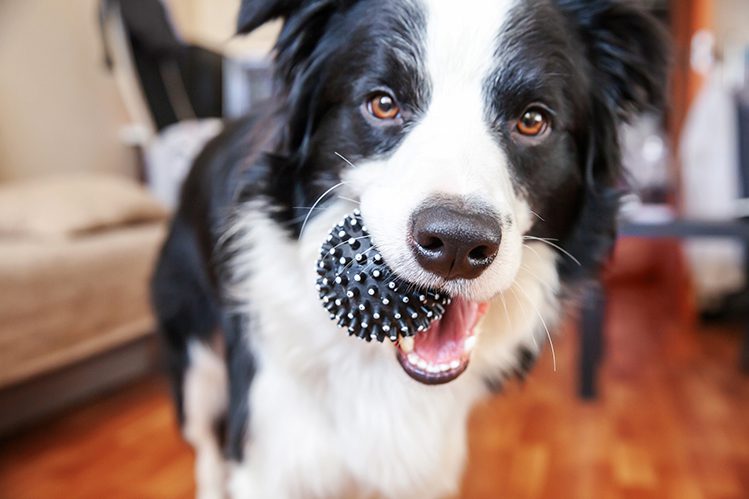
Do not forget about preventive examinations at the veterinarian, regularly vaccinate and treat against parasites.
Make sure that the dog is fully fed and the selected food is suitable for him to the fullest. Stick to the rules of feeding. Mix dry and wet foods, but don’t mix prepared foods with refrigerated foods.
Feed your dog special balanced treats, not your favorite delicacies.
Always keep on hand the contacts of the veterinarian and the nearest veterinary clinics, including round-the-clock ones.
And finally, a checklist of essential accessories for a teenage puppy. Check if you have all of these.
Two bowls: one for water, one for food.
A couchette.
Cage-aviary.
Container for transportation (carrying).
Collar with address tag, leash (harness, tape measure), muzzle.
Skin and hair care products: shampoo, conditioner, detangling spray.
Grooming tools and products: nail cutter, combing tool (brush, furminator, etc.), lotion and wipes for cleaning eyes and ears, clipper or scissors (if necessary), etc.
Completed first aid kit.
Clothes and shoes – if necessary.
A variety of toys for joint and independent play.
Have you checked? Is everything in place? Then you can continue to be the best host in the world!
Happy growing up to your pet!



